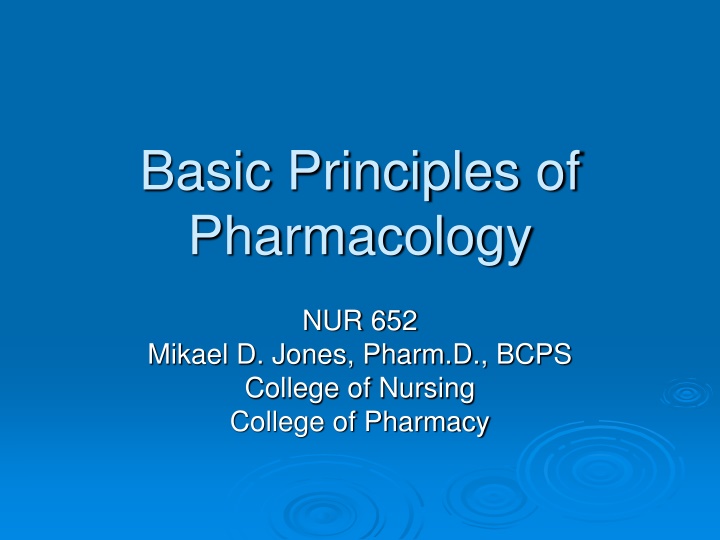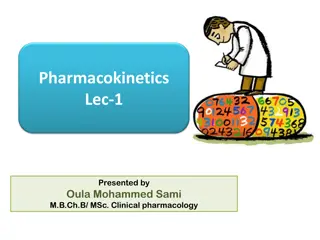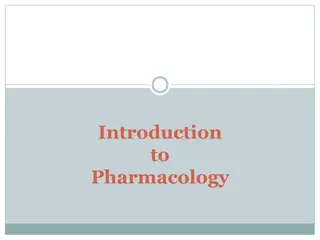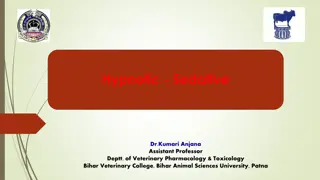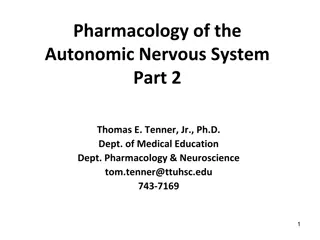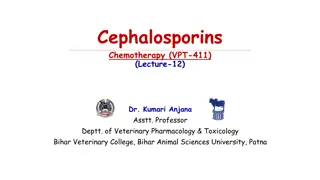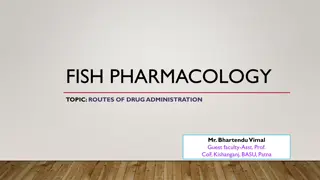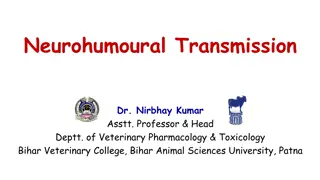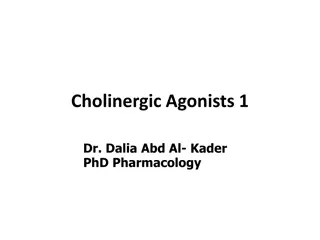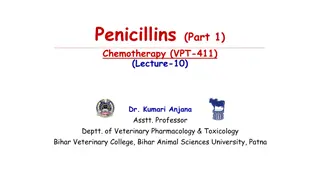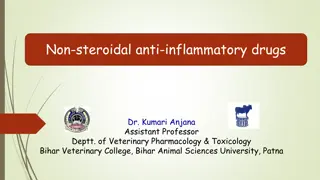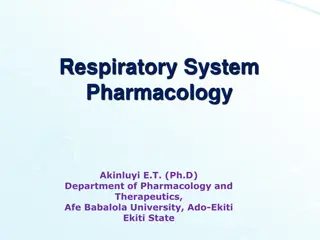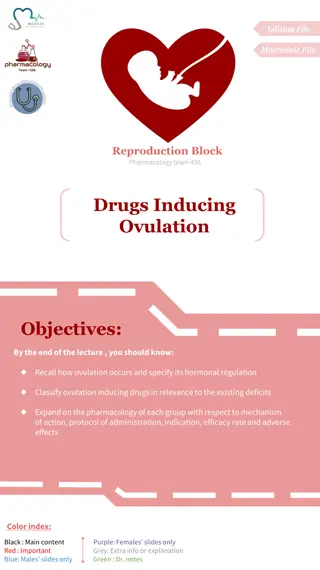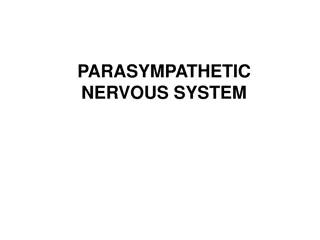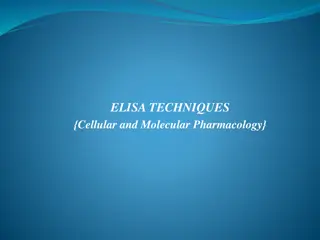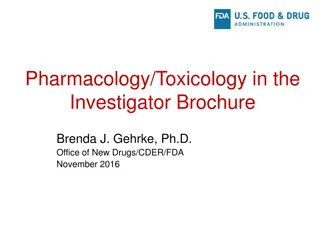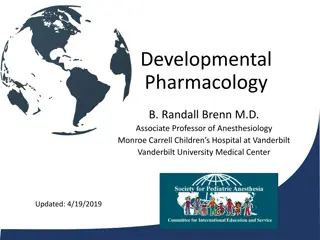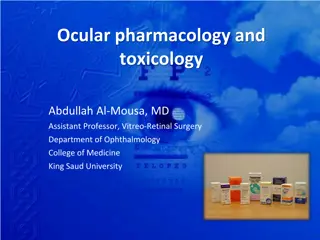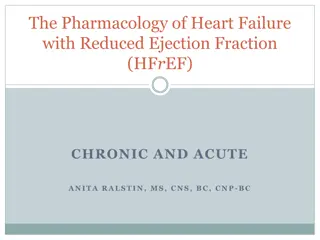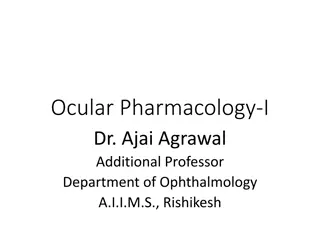Basic Principles of Pharmacology
Pharmacology involves the study of drugs, their effects on the body, and how they interact with biological systems. It encompasses branches like pharmacodynamics, pharmacokinetics, and pharmacotherapeutics. Drugs modulate physiological processes, mimic or block substances, alter chemical balance, and can combat infections or aberrant cells. Understanding drug properties and actions is crucial in medical practice.
Download Presentation

Please find below an Image/Link to download the presentation.
The content on the website is provided AS IS for your information and personal use only. It may not be sold, licensed, or shared on other websites without obtaining consent from the author.If you encounter any issues during the download, it is possible that the publisher has removed the file from their server.
You are allowed to download the files provided on this website for personal or commercial use, subject to the condition that they are used lawfully. All files are the property of their respective owners.
The content on the website is provided AS IS for your information and personal use only. It may not be sold, licensed, or shared on other websites without obtaining consent from the author.
E N D
Presentation Transcript
Basic Principles of Pharmacology NUR 652 Mikael D. Jones, Pharm.D., BCPS College of Nursing College of Pharmacy
Introduction Pharmacology The study of drugs and their effects in and on the body 3 Branches of Study in Pharmacology Pharmacodynamics Pharmacokinetics Pharmacotherapeutics
Pharmacodynamics What does the drug do to the body? Study of biochemical and physiological effects of drugs and their mechanism of action Drugs interact with a macromolecue of an organism to cause an physiological effect Drugs do not create new functions for body tissue Drugs alter the rate at which bodily functions occur
Pharmacokinetics What does the body due to the drug? The study of what happens to a drug inside the body once it has been given 4 physiologic processes occur to a drug Absorption Distribution Metabolism Elimination
Pharmacotherapeutics Evaluating medications and choosing therapies for individual patients taking into account interpatient variability Goal of all drug therapy Achieve maximum effectiveness with minimum toxicity
What are Drugs? Organic compounds Contain carbon Most drugs inorganic compounds Lithium Electrolytes (Ca, Mg, K, Na, etc.) Exist in a variety of states (at room temp) Solid = aspirin Liquid = ethanol Gas = nitrous oxide
What are Drugs? Vary in size Li Most Drugs MW 100-1000 MW 7 MW 59,050
What are Drugs? Drugs are derived from Natural sources Morphine Chemical synthesis Most drugs Biotechnology process Insulin (recombinant DNA) Epoetin Alfa
What do drugs do? Modulate physiologic processes Mimic endogenous substances Block endogenous substances Alter endogenous chemical balance Kill invading organisms Bacteria Virus Fungi Kill aberrant cells Cancer
How Do Drugs Work? Macromolecule DRUG Macromolecule DRUG Biochemical/Physiologic Changes Occur
Receptors Component of organism with which the drug is thought to interact Cell Surface Protein Hormones Growth Factors Transcription factors Neurotransmitters Enzymes Acetylcholinesterase Dihydrofolate reductase Angiotensin Converting Enzyme
Receptors Component of organism with which the drug is thought to interact Transport Proteins Na+/K+ ATPase Structural Proteins Tubulin Nucleic Acids Target for chemotherapy
Receptors Most commonly exploited receptors Proteins that are responsible for transduction of extracellular signals into intracellular responses These are found mostly on cell membranes or intracellularly Most involved in endogenous regulatory pathways
Receptors First to respond to a ligand Receptors are specific to only certain ligands Many drugs are targeted towards receptors for endogenous regulatory ligands
Protein-based Receptors Receptor Ligand Biochemical/Physiologic Changes Occur Receptor No changes in Biochemical/Physiologic Process
Protein-based Receptors Cellular Effects 2nd Messen gers Changes Gene expression Receptor Ligand
Receptor Subtypes Receptors can be classified into subtypes Subtypes may Differ in distribution in the body Differ in how they communicate with the cell May or may not display distinctive patterns of selectivity among agonists and antagonists May have different functions Useful to develop drugs that exploit receptor subtypes Albuterol
Receptor Subtypes Receptor Subtype 1 Ligand Biochemical/Physiologic Changes Occur Subtype Receptor Ligand 2 Biochemical/Physiologic Changes Occur Ligand Biochemical/Physiologic Changes Occur
Consequence of Drug-Receptor Binding Drugs are exogenous ligands to specific receptors Binding of drug to receptor sets in motion a cellular actions that result in pharmacologic effect
Drug-Receptor Binding Cellular Effects 2nd Messen gers Changes Gene expression Receptor Ligand Ligand Drug
Efficacy and Affinity Efficacy (a.k.a. intrinsic activity) refers to the ability of a drug to activate a receptor once the drug-receptor complex has formed Affinity refers to the strength with which a drug binds to its receptor and does not imply ANY drug efficacy
Agonist A drug that mimics the effects of an endogenous substance (e.g. a hormone or neurotransmitter) by interacting with the appropriate receptor for that endogenous substance
Dose Response Relationship Explores the relationship between the dose of a drug administered and the effect that is obtained Effect at low dose Minimal effect Effect at high dose Threshold/plateau dose
Dose Response Relationship Dose response curves The X-axis shows dose of drug on a logarithmic scale The Y axis shows the drug effect The typical shape of the dose-response curve is sigmoid, reflecting the threshold and the plateau The most effective area of the dose-response curve is the linear midportion
Dose-response Curve 100 Plateau % Effect 50 Threshold 0 0.001 0.1 10 100 1000 Dose (log scale)
Dose-response Curve Drug A 100 Drug B % Effect Greater Efficacy 50 Drug C 0 0.001 0.1 10 100 1000 Dose (log scale)
Agonist Dose-Response Curve Full Agonist If an agonist (drug) elicits a response from a given biologic tissue that is maximal (i.e. not exceeded by other agents) High efficacy and therefore elicit maximal response Partial Agonist If an agonist (drug) produces an effect that is less than maximal Intermediate efficacy elicit submaximal even when all receptors are occupied
Agonist Dose-Response Curve Full agonists have greater efficacy than partial agonists because they can activate a receptor maximally
Dose-response Curve Full agonist 100 Partial agonist % Effect 50 0 0.001 0.1 10 100 1000 Dose (log scale)
Potency Drug required for a specified level of a specified effect Can represent both pharmacokinetic and pharmacokinetic properties Establish potency for desirable and adverse effects
Dose-response Curve Effect A Effect B Effect C 100 % Effect 50 Greater Potency 0 0.001 0.1 10 100 1000 Dose (log scale)
Dose-response Curve Drug A Drug B Drug C 100 % Effect 50 Greater Potency 0 0.001 0.1 10 100 1000 Dose (log scale)
Antagonist Antagonist A drug that binds to an appropriate receptor, but is devoid of activity An antagonist exerts its effect by inhibiting the action of a specific endogenous or exogenous agonist on its receptor
Pharmacodynamics Antagonists Drugs that bind to receptors with affinity but no efficacy are antagonists In other words, antagonists do not activate the receptor to produce a physiologic response, but exert their effects by depressing or preventing the response of an organism to a given dose of agonist The dose-response relationship can be used to depict antagonists
Pharmacodynamics Two types of antagonists Competitive antagonists (a.k.a. reversible antagonists) antagonist binds to receptor in a reversible manner; antagonist and agonist compete for the receptor site effects of a competitive antagonist can always be overcome by giving increased doses of agonist very commonly employed examples include diphenhydramine, naloxone, and propranolol therapeutically,
Pharmacodynamics Two types of antagonists Non-competitive antagonist antagonist binds to receptor in an irreversible manner antagonist and agonist do not compete for the receptor, the antagonist binds to receptor and wipes out a fraction of the available receptors effect of a non-competitive antagonist can not be overcome by giving increased doses of agonist not employed therapeutically that often, examples include phenoxybenzamine
Dose-response Curve Agonist alone Agonist in presence of competitive antagonist 100 % Effect 50 Agonist in presence of non-competitive antagonist 0 0.001 0.1 10 1000 Dose (log scale)
Receptor Types Ligand-gated Ion Channel G Protein-Coupled Receptor Nuclear Protein (Intracelluar) Receptors Enzyme-linked receptors Tyrosine Kinase Nitric oxide/guanlyate cyclase We discuss as we cover different Pharmacologic classes
Ligand-gated Ion Channels Examples Cholinergic nicotinic receptors GABA Receptors Changes in membrane potential or ionic concentration within cell Intracellular Effects
G-protein-coupled receptors Examples and adrenorectprs 5-HT receptors Protein Phosphorylation Intracellular Effects
Enzyme-linked receptors Insulin receptors Epidermal growth factors R R-PO4 Protein Phosphorylation Intracellular Effects
Intracellular receptors Examples Steroid Hormones Protein Phosphorylation Altered gene expression
Second-Messenger Pathways Signal Transduction Once a ligand binds with receptor a cascade of cellular events is activated that ultimately activates the physiological target Second Messengers are intermediate Enzymes or transport proteins that creates, moves or degrades a small metabolite or ion This alteration of ion or metabolites leads to physiologic change
Second-Messenger Pathways Second Messengers Also integrate/cooridnate information from signals from other ligands and cellular activities Examples cAMP-cyclic adenosine monophosphate IP3 Inositol 1,4,5-triphosphate Diacylglycerol cGMP-cyclic guanosine monophosphate
Receptor-Effector Coupling Effect 1 Effector 1 Receptor Drug Effect 1 Effector 1 Receptor Drug Effector 2 Effect 2
Receptor-Effector Coupling Effect 1 Receptor 1 Effector 1 Drug Receptor Drug Effector 2 2 Effect 2
